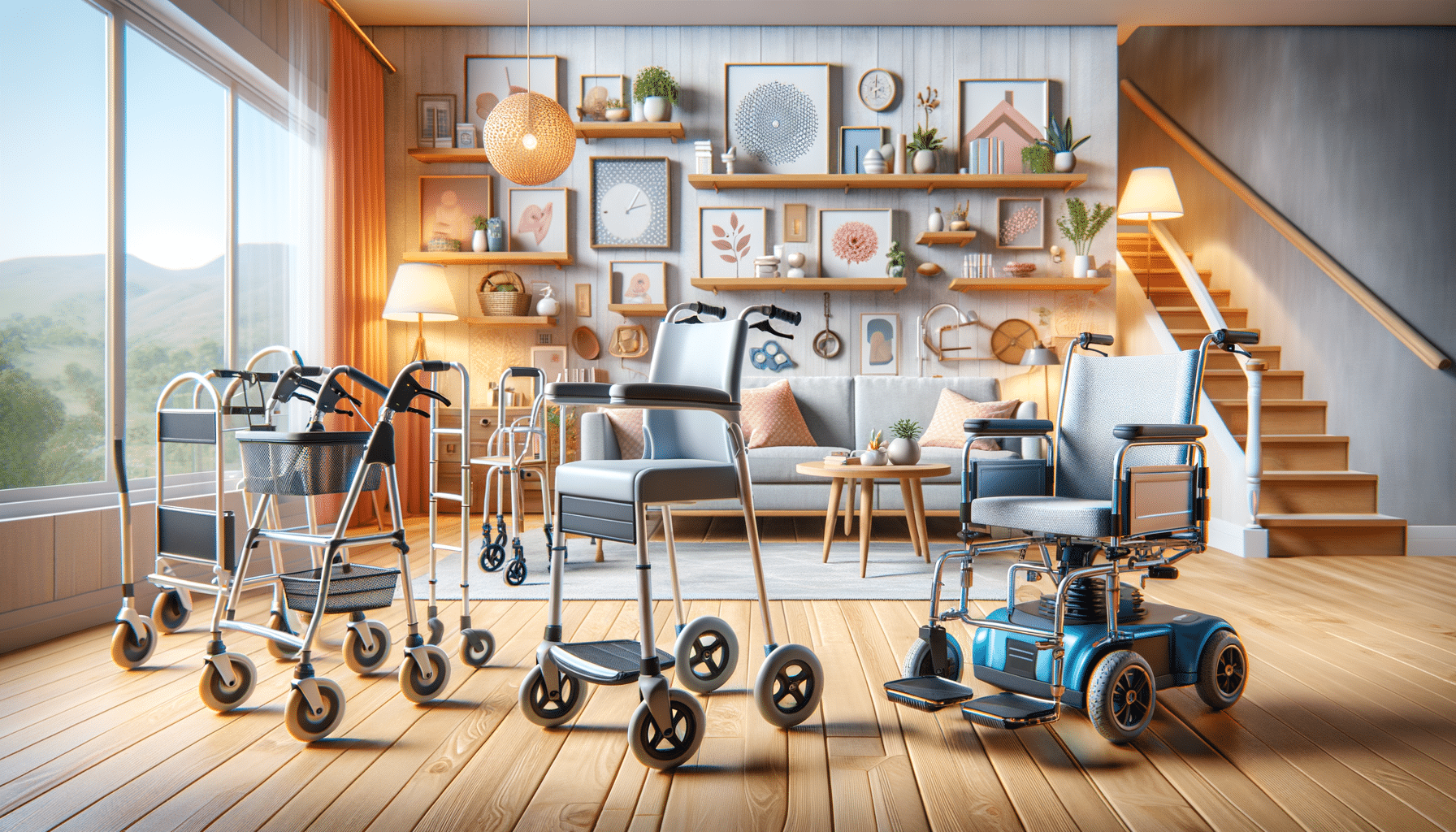
Exploring the Advantages of Senior Mobility Solutions
The Growing Importance of Senior Mobility Solutions
In recent years, the demand for senior mobility solutions has surged, reflecting broader demographic trends and the evolving needs of an aging population. As people live longer and seek to maintain their independence, mobility solutions have become a vital part of daily life. These solutions range from simple walking aids to sophisticated mobility scooters, each designed to enhance the quality of life for seniors. The primary goal is to ensure that seniors can navigate their environments safely and comfortably, thereby promoting autonomy and reducing the risk of falls and injuries.
Statistics indicate that by 2030, one in five Americans will be over the age of 65, underscoring the urgency of addressing mobility challenges. With this demographic shift, the market for mobility solutions is expected to expand significantly. This growth is driven not only by the need to support seniors but also by advancements in technology that offer more efficient and user-friendly options.
Senior mobility solutions are not only about physical assistance; they also play a crucial role in mental well-being. By enabling seniors to engage in social activities and maintain an active lifestyle, these solutions help combat loneliness and depression, common issues among the elderly. Therefore, investing in mobility solutions is a step towards fostering a healthier, more connected senior community.
Types of Senior Mobility Solutions
There is a wide array of senior mobility solutions available, each catering to different levels of mobility and specific needs. Understanding these options is essential for selecting the right solution for individual circumstances.
Walking Aids: These include canes and walkers, which provide stability and support for those who need assistance with balance. They are lightweight and easy to use, making them a popular choice for seniors who require minimal support.
Mobility Scooters: These are ideal for seniors who have difficulty walking long distances. Mobility scooters come in various sizes and configurations, offering features such as adjustable seats, baskets for carrying personal items, and even weather protection.
Wheelchairs: For those with more significant mobility impairments, wheelchairs offer a reliable means of transportation. Modern wheelchairs are designed for comfort and ease of use, with options for manual or electric operation.
Stairlifts: These are essential for seniors living in multi-story homes. Stairlifts provide a safe and convenient way to navigate stairs, reducing the risk of falls and facilitating access to all areas of the home.
The choice of mobility solution depends on various factors, including the user’s physical condition, living environment, and personal preferences. Consulting with healthcare professionals can provide valuable insights into selecting the most appropriate option.
Technological Advancements in Mobility Solutions
Technology has revolutionized the field of senior mobility solutions, offering innovative products that enhance safety, comfort, and convenience. These advancements have made it possible for seniors to enjoy greater independence and improved quality of life.
One of the most significant technological developments is the integration of smart technology into mobility devices. Smart walkers and wheelchairs equipped with GPS and health monitoring systems allow caregivers to track the user’s location and vital signs remotely. This feature is particularly beneficial for seniors with cognitive impairments, providing peace of mind for both users and their families.
Another noteworthy advancement is the introduction of lightweight materials in the construction of mobility aids. Carbon fiber and titanium are increasingly used to create durable yet light devices, making them easier to maneuver and transport. This is especially important for seniors who travel frequently or need to store their mobility aids in compact spaces.
Moreover, the development of all-terrain mobility scooters has opened up new possibilities for outdoor activities. These scooters are designed to handle various surfaces, from sandy beaches to rugged trails, enabling seniors to explore new environments and engage in recreational activities that were previously inaccessible.
As technology continues to evolve, the future of senior mobility solutions looks promising, with the potential for even more sophisticated and user-friendly innovations on the horizon.
Choosing the Right Mobility Solution
Selecting the appropriate mobility solution is a critical decision that involves careful consideration of various factors. The right choice can significantly enhance a senior’s quality of life, while the wrong one may lead to frustration and decreased independence.
Firstly, it’s essential to assess the individual’s mobility needs. This involves evaluating their physical capabilities, the nature of their mobility challenges, and their daily routines. For instance, someone who struggles with balance but can walk short distances may benefit from a walker, while a person with severe mobility restrictions might require a wheelchair or mobility scooter.
Secondly, the living environment plays a crucial role in determining the suitable mobility solution. Seniors living in homes with stairs might need stairlifts, whereas those residing in urban areas with limited space might prefer compact, foldable devices.
Budget is another important consideration. Mobility solutions vary widely in price, and it’s essential to find a balance between cost and functionality. Some insurance plans and government programs may offer financial assistance for purchasing mobility aids, which can alleviate some of the financial burdens.
Finally, consulting with healthcare professionals such as occupational therapists can provide valuable guidance. These experts can perform assessments and recommend solutions tailored to the individual’s specific needs, ensuring that the chosen mobility aid enhances safety and independence.
By taking a thoughtful approach to selecting mobility solutions, seniors and their families can find options that not only meet immediate needs but also adapt to changing circumstances over time.
Future Trends in Senior Mobility Solutions
The landscape of senior mobility solutions is continually evolving, driven by technological advancements and a growing awareness of the needs of an aging population. As we look to the future, several trends are likely to shape the development of mobility aids.
One emerging trend is the focus on personalization. Manufacturers are increasingly offering customizable options, allowing users to tailor their mobility aids to their preferences and specific requirements. This includes adjustable seating, personalized controls, and a variety of aesthetic choices, making mobility aids more appealing and user-friendly.
Another trend is the integration of artificial intelligence (AI) in mobility solutions. AI-powered devices can learn and adapt to the user’s behavior, providing personalized assistance and improving safety. For example, AI can enable a mobility scooter to detect obstacles and adjust its path accordingly, reducing the risk of accidents.
Sustainability is also becoming a key consideration in the development of mobility solutions. Eco-friendly materials and energy-efficient technologies are being incorporated into new designs, reflecting a broader commitment to environmental responsibility.
Lastly, the rise of telehealth and remote monitoring is likely to influence the future of mobility solutions. Devices equipped with health monitoring capabilities can transmit data to healthcare providers, facilitating early intervention and personalized care plans.
As these trends continue to unfold, the future of senior mobility solutions promises to be dynamic and innovative, offering new possibilities for enhancing the independence and well-being of seniors worldwide.

